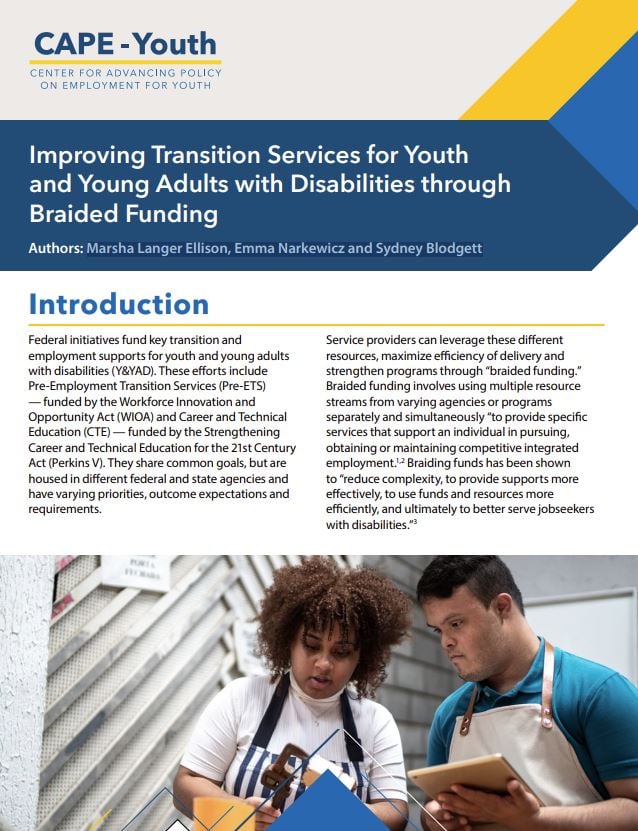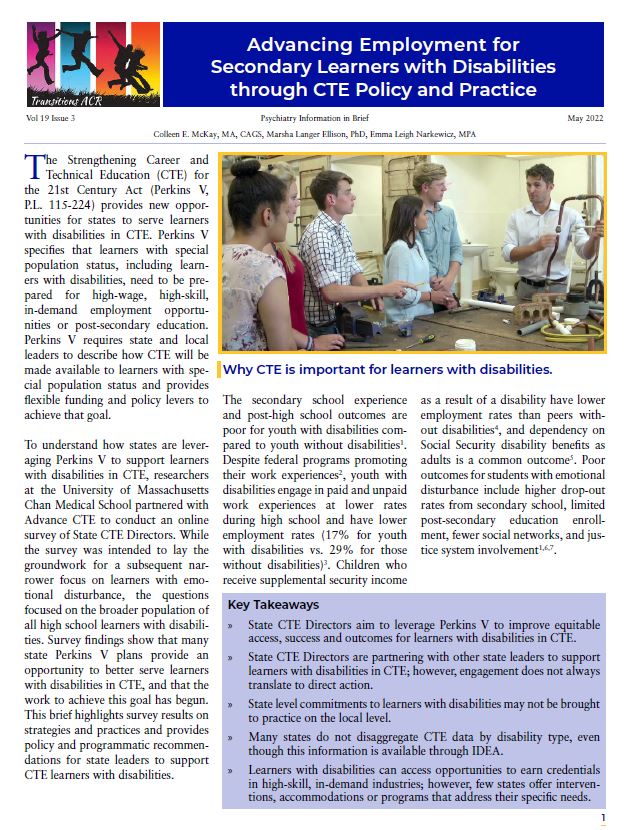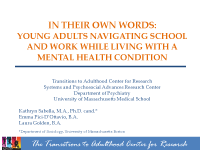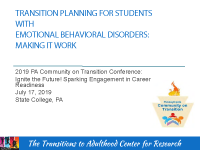Education
Publications
Tip Sheets and Issue Briefs
-
 Read more
Read more -

Advancing Employment for Secondary Learners with Disabilities through CTE Policy and Practice
Read more -

Promoting and Maintaining Career and Technical Education for Students with Disabilities: State strategies developed during the COVID-19 pandemic
Read more
Presentations
-

In Their Own Words: Young adults navigating school and work while living with a mental health condition
-

Transition Planning for Students with Emotional Behavioral Disorders: Making it Work
-

School and Work Trajectories of Young Adults with Serious Mental Health Conditions
Reports and Articles
- Partnering with Community Agencies in Transition Planning for Students with Emotional Behavioral Disturbance
- Supporting Student-Led Transition Planning for Students with Emotional Behavioral Disturbance
- Incorporating Career and Technical Education in Transition Planning for Students with Emotional Behavioral Disturbance
- IPS-Y: IPS Fidelity Scale for Young Adults
- IPS Supported Employment for Youth: Helping Transition Age Youth with Serious Mental Health Conditions to Access Education, Jobs, and Careers
